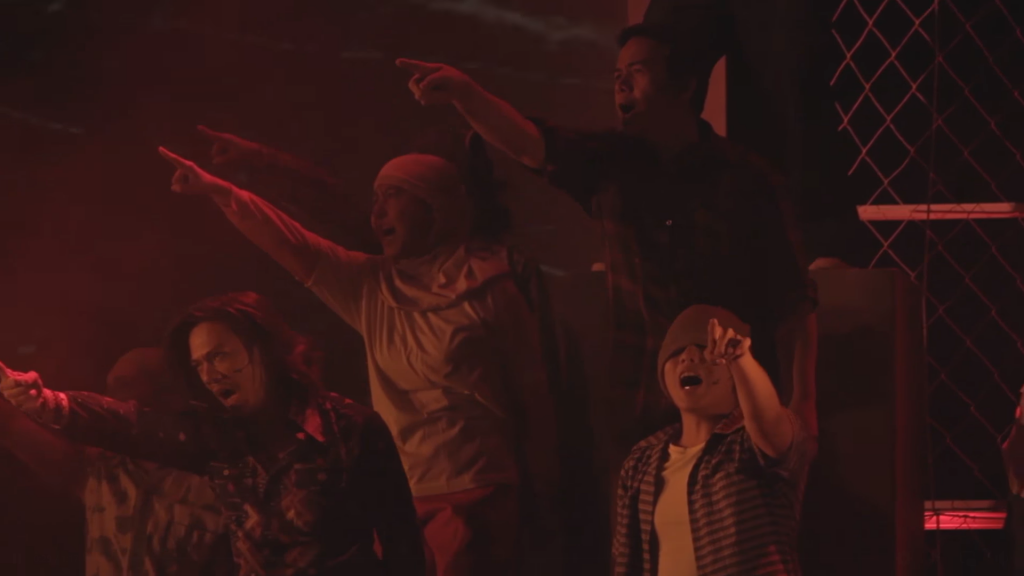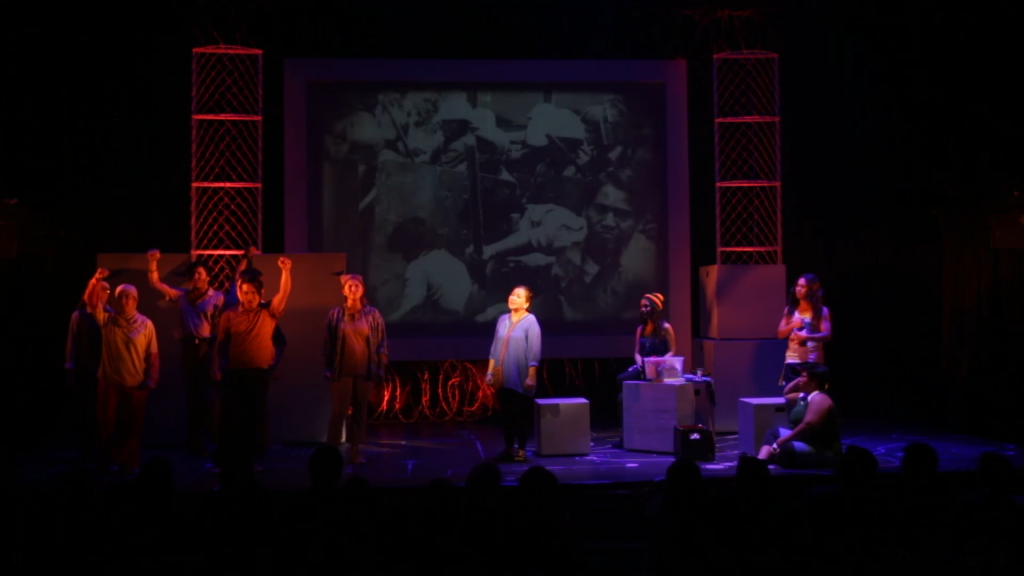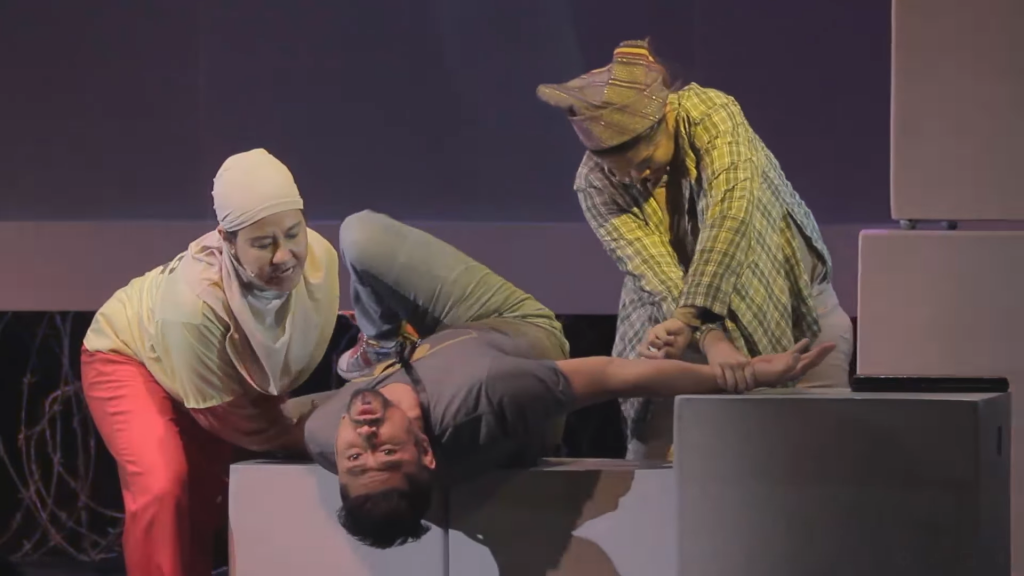BY FATIMA B. BADURIA

TROLLING AS a profession perpetuates online with social media as its main operational base. Many misleading messages are crafted to tip the scale towards a presidential bet. As long as this purpose is served, accuracy ceases to matter. As the trolls oppose the truth, their only logical strategy is to suppress logic.
Directed by Maribel Legarda and written by Liza Magtoto, A Game of Trolls conveys a palpable reality through a musical play. The play focuses on a particular historical epoch in the Philippines: the 1970s Martial Law under the dictatorship of former president Ferdinand Marcos. This chapter in history arises as a key project for the trolls in the play since revising it can hasten their political schemes.
Taking center stage as the main protagonist is a troll himself, Hector (Myke Salomon). Striving to reach competitive standards, he does the job without failing: creating troll accounts, adopting fallacious arguments, and sensationalizing deceitful scripts.
Despite being assiduous in his work, Hector is not fully convinced of the pro-Marcos ideals. He shows a tinge of hesitation as he begins to question the motives of their leader, Bimbam (Vince Lim).
Complicating Hector’s state of affairs is the long-standing strain in his relationship with his mother, Tere (Upeng Galang-Fernandez), an activist during Martial Law. Becoming a full-time activist and a mother was difficult for Tere to balance, which eventually caused Hector to resent his mother and her ideals in his adult years.
Using his troll account, Hector unknowingly clashes with his close friend Cons (Gold Villar Lim) on social media. In the heated argument, Cons presents to him the martial law victims. Stubbornly, Hector finishes the exchange by deeming them irrelevant.
Little does he know that this would offend the dead whose stories are being erased. The martial law victims then arise to visit him in a manner reminiscent of Charles Dickens’ A Christmas Carol.
The victims who visit Hector provide a glance at their grim experiences during the Martial Law. As he undergoes the violence and other adversities of torture firsthand, the audience is taken on a harrowing experience in the play. But at the same time, the satirical style of the play saves it from being too heavy.
In one scene, Hector is made to stand in the shoes of a doctor who was marked as subersibo (subversive). The doctor, now a ghost, makes him see the unjust fate he suffered. In another scene, two other victims propel him to experience the various types of torture through a comical performance that can be likened to a variety show.
Interestingly, the play combines several art disciplines: music, poetry, dance, and rap. In effect, the audience’s artistic appetite is gratified.
Despite its artistic endeavor, the visuals of the set are lacking with its minimalistic production design. Its usage of only abstract and geometrical shapes to suggest a specific setting and object is often misleading or confusing to the viewers’ eyes.
On a good note, however, the abstract set design can shift the audience’s focus to the grander ocular elements. Lighting techniques fittingly illuminate the stage. The spotlight amply directs the viewer’s attention while highlighting essential parts of the stage. Various light intensities and colors also steer the mood, utilizing yellow to suggest humor and red to emphasize distress.

Furthermore, the actors have visibly mastered their craft, rendering a smooth performance. Throughout the play, the cast remained sincere to their characters through apt facial expressions, body movements, and deliverance of dialogue.

The result: a powerful staging capable of moving its audience in both its tragic and comedic aspects.
Ultimately, completing the artistry is its remarkable musicality. The sequence of songs and arrangements by Vincent de Jesus vitalizes the show, bringing color to the story and the characters. One iconic musical segment is the trolls’ introductory song. Its lyrics present their line of work with wit, illustrative of their trolling strategies and motives.
All things considered, A Game of Trolls succeeds in its aim to inform and protest. It becomes an instrument that sheds light on the 1970’s martial law, wrongfully revered as the “golden days” of Philippine history. The enjoyable viewing experience counts only as a bonus because its strongest point is the production’s milieu in providing a fresh and factual perspective. The aftermath is a protest play to remember. F



